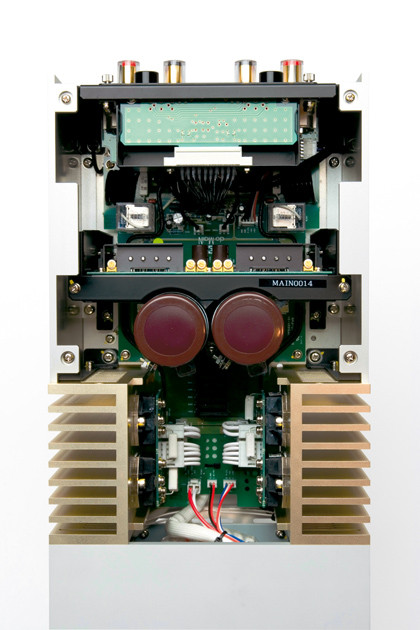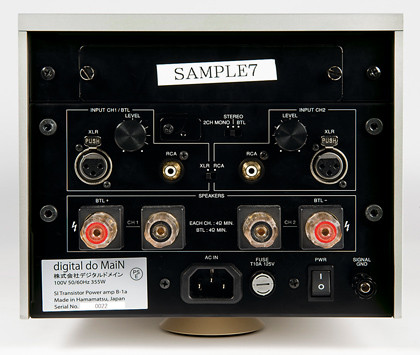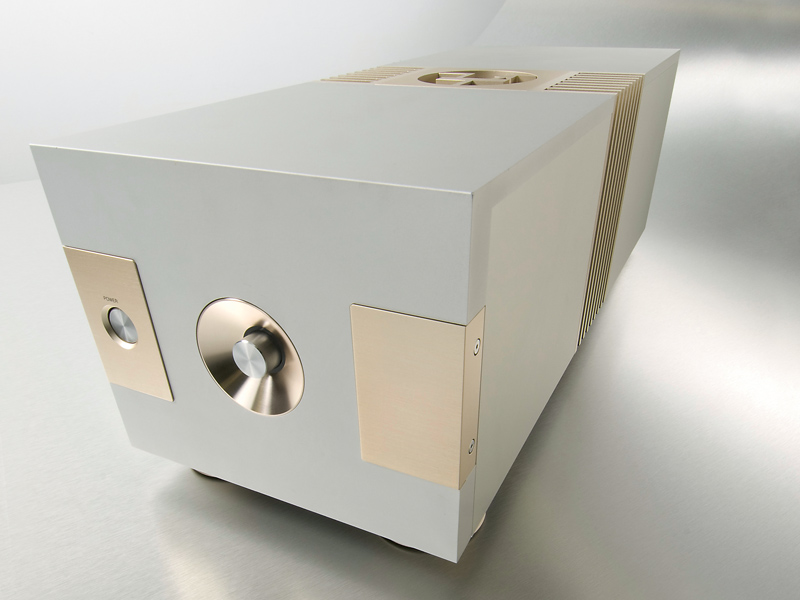TechRadar Verdict
Many strive to build transistor amps with valve qualities, but few have succeeded to this degree. By re-creating the V-FET, DDM has built one of the most thrilling amplifiers on the market. The fact that the case design is so funky is a bonus
Pros
- +
Incredibly open, fast and dynamic
- +
Superb casework and great cabinet design
- +
You don't even need a preamp
Cons
- -
Rather a lot of onboard volume controls for a power amp
- -
Its size is also against it, as it's too deep for most equipment racks
Why you can trust TechRadar
Digital Do Main is a high-end company that's still unknown outside of Japan, but we'd be surprised if that remained the case after word gets out about the B-1a power amplifier.
Apart from being an oddly proportioned, but superbly built and finished integrated power amp with one input and a volume control, this is the first amplifier that we've seen that uses V-FET output transistors.
The V-FET is not a new type of transistor, but it has not been used in audio components since, at least, the early eighties. As a result the few amplifiers that have employed it have become cult classics with a few select online forums filled with discussion about their various merits.
The way in which Digital Do Main has resurrected the V-FET is not unlike the way in which another Japanese company, Audio Note (now KSL Kondo) brought the world's attention back to the single-ended triode amplifier in the eighties.
Whether the V-FET will enjoy such a successful revival remains to be seen, but if this transistor is the key to the sound of the B-1a, then it certainly deserves to.
As V-FET devices are no longer manufactured, DDM builds them itself which must make it unique in the world of hi-fi companies and beyond.
The company came to the attention of UK distributor ABC Audio because it makes a D-1 digital to analogue converter that incorporates MSB Platinum DAC modules and MSB is a key brand in ABC's portfolio (DDM also converts a Denon 2930 to act as an SACD player and is working on rebuilding a classic loudspeaker from the fifties called the RCA LC-1a).

The company's owner, Kazuhiko Nishi, founded the ASCII corporation, which had early ties with Microsoft and is now a listed multimedia company, so we can safely say that he's not in it for the money.
The B-1a is a 150-watt power amplifier with alternative RCA phono and XLR inputs, you could feasibly connect one source to XLR and another to the phonos if you wanted to use the amp as an integrated, but changing between them means reaching a small switch on the back panel, so this is not entirely practical.
However, by using the amp directly connected to a source gives better results than you can achieve with most preamps, so it's worth considering.
There are also volume controls on the rear panel, one for each channel and these can be used to adjust balance if required.
The B-1a can be used alone as a stereo or as a mono amplifier, or you can bridge it by adding a second B-1a and bolting the two together by replacing the panel opposite the power button with one that links the two units.
Operationally, there is a full on/off switch on the back panel and a standby button on the front. In standby mode the white light around the volume knob flashes on and off, like a very relaxed strobe light, which may not be to all tastes.
In true hardcore style there is no remote volume function – this product is about sound not convenience.
Sound quality
When the B-1a arrived we were in the process of reviewing the fabulous Vivid Giya loudspeaker and had been struggling to get as good a sound as had been produced by the next model down in the Vivid range, the K1.
One reason for the latter's success was the presence of Leema's superb Pyxis/Altair IV amplification in the system, now that it had been returned we were left with our regular reference kit; amplifiers that sound pretty damn good on most speakers, but which are not in the ultra-fi league.
The Digital Do Main, however, proved more than up to the task of revealing just how thrilling the Giya is because the amp itself is remarkably dynamic. A lot of manufacturers claim that their solid state amp has the positive attributes of a good valve design but, in truth, they rarely succeed in emulating the way that glass audio can extract the life from a recording.

The Digital Do Main may or may not make this claim – its website is currently only in Japanese – but the B-1a certainly achieves this goal.
From the off, you can hear that it delivers a fresh, vigorous and revealing sound that is thrilling with a resolute loudspeaker. A good example of the degree we're talking about is the CD Brewster's Rooster which sounded excellent on the regular system, but didn't quite do it for us musically.
On the B-1a/Giya it became a live and vivid recording: one where the musicians delivered more energy and enthusiasm with a cohesion and groove that had barely been hinted at before.
Now the Giya is a great speaker, but a very expensive one, so we reluctantly swapped it for something more down to earth in order to get a more rounded view of the amp's potential. Enjoying the reviewing process is not strictly off-limits but it can undermine one's objectivity.
Bringing in the relatively real-world Bowers and Wilkins 802D reduced the overall adrenalin level created by the system, but it still achieved an impressive result. It should be noted that we were using an MSB Platinum III DAC in this set-up and, therefore, were playing to the amp's strengths in the realms of dynamics, imaging and transparency.
In this context it became apparent that the B-1a's valve-style qualities extend to a slight emphasis on the midband, you hear a little more of a piano's right hand or a trumpet than usual.
The treble is extremely clean and smooth which can give the impression that it's rolled off, but the amount of image depth that it conjures suggests otherwise, it's just cleaner than most at this end of the scale – another valve characteristic.
The bass has a tremendous speed as well as decent weight, it's not as powerful as something like a Bryston power amp but it is extremely articulate, you get the full thunk of a bass guitar along with all of the harmonic structure; so when the denser passages come along it's easy to follow them.
If you want to play loud a single unit is not sufficient unless you have unusually sensitive speakers, 150 watts into four ohms translates into about 90 watts into eight. This is why DDM offers the bridging and monoblock modes.
The fact that you can upgrade by adding on amps is quite a neat approach, although whether it would offer greater resolution is a moot point, but it would certainly increase the grunt-factor.
If you haven't noticed, we rather like this amp. In fact, it's one of the best we've heard in a long time and if you want an open transistor design with massive power, then it's easily the best at anywhere near it's price.
Follow TechRadar Reviews on Twitter: http://twitter.com/techradarreview
